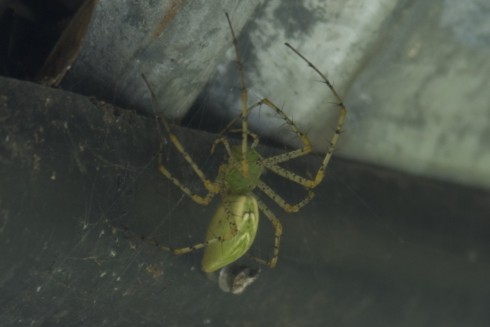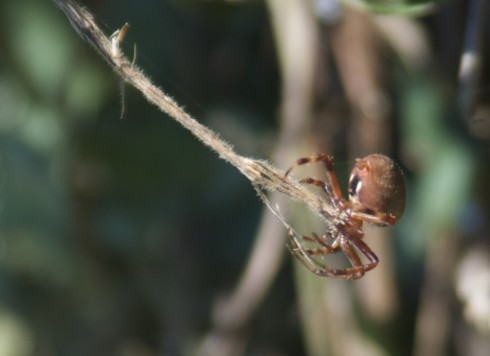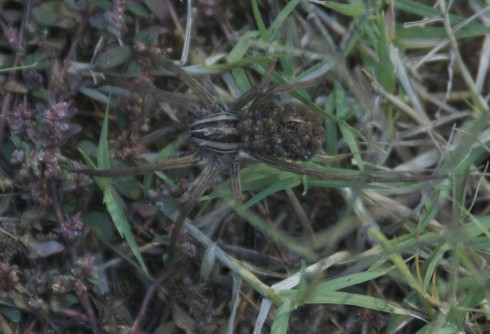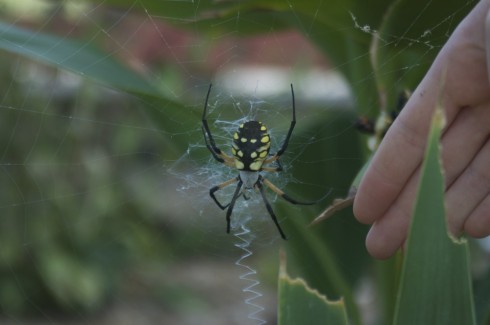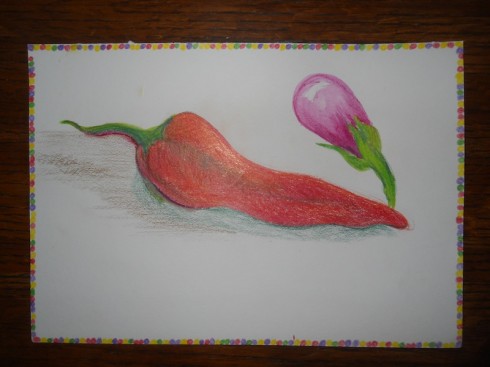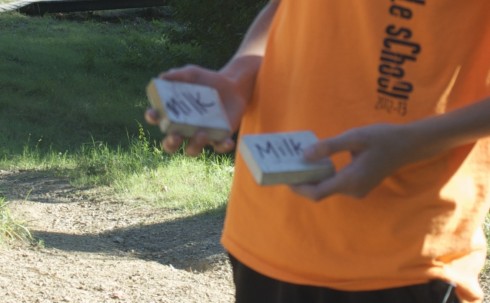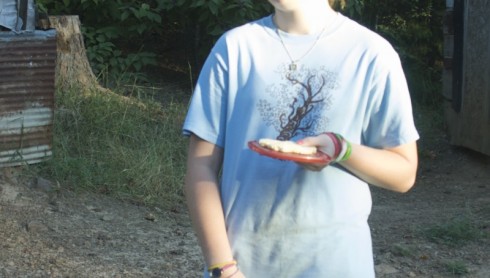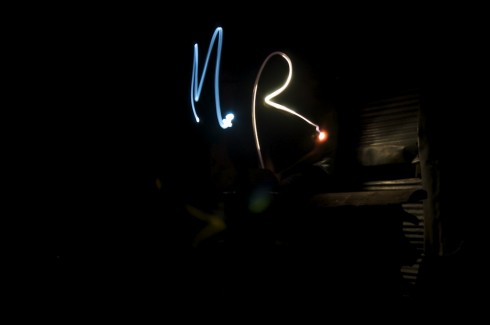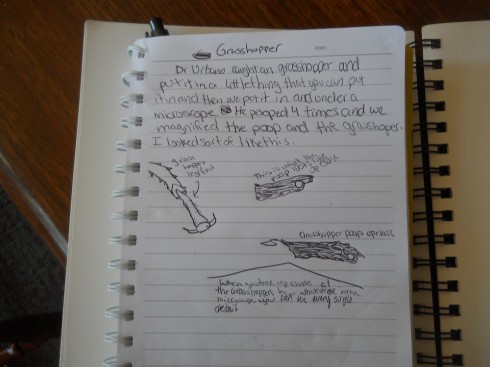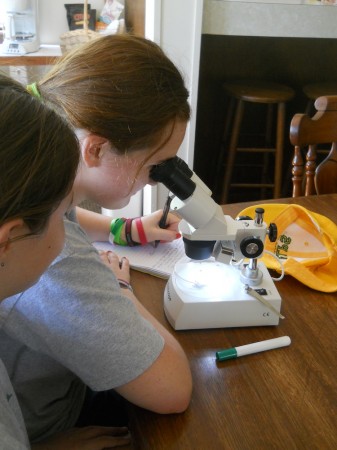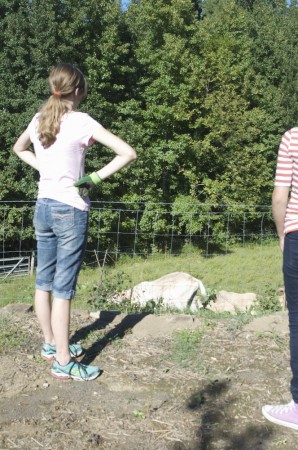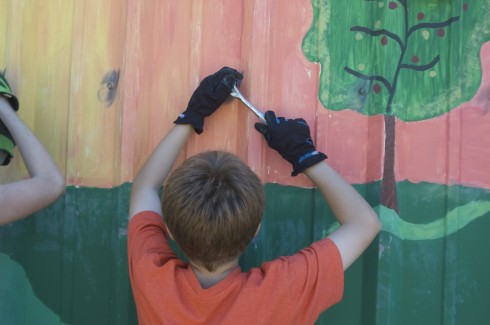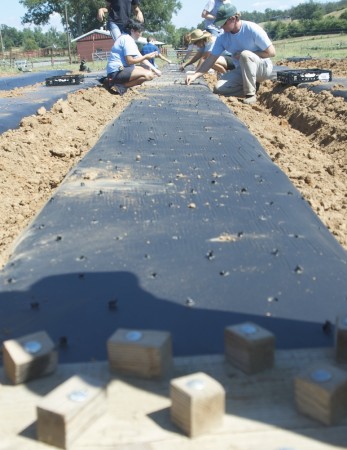
One of the jobs my class helped with at the Heifer Ranch was planting garlic in the Heifer CSA garden. The gardeners had laid rows and rows of this black plastic mulch to keep down the weeds, protect the soil, and help keep the ground warm over the winter.
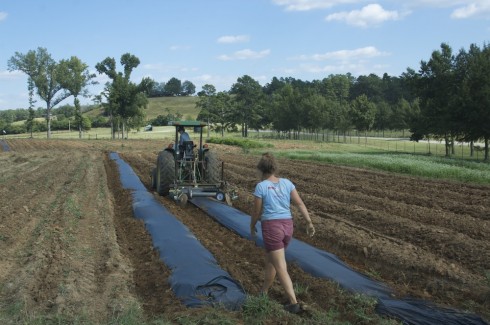
We then used an improvised puncher to put holes in the plastic through which we could plant cloves of garlic pointy side up. The puncher was a simple flat piece of plywood, about one foot by three feet in dimensions, with a set of bolts drilled through. The bolts extended a few inches below the board and would be pressed through the black plastic. Two handles on each side of the board made it easier for two people to maneuver and punch row after row of holes.

As I took my turn punching holes, we did the math to figure out just how much garlic we were planting. A quick count of the last imprint of the puncher showed about 15 holes per punch. Each row was about 200 feet long, which made for approximately 3,000 heads of garlic per row.
We managed to plant one and a half rows. That meant about 4,500 garlic cloves. With ten people planting, that meant each person planted about 450 cloves. Not bad for an afternoon’s work.
